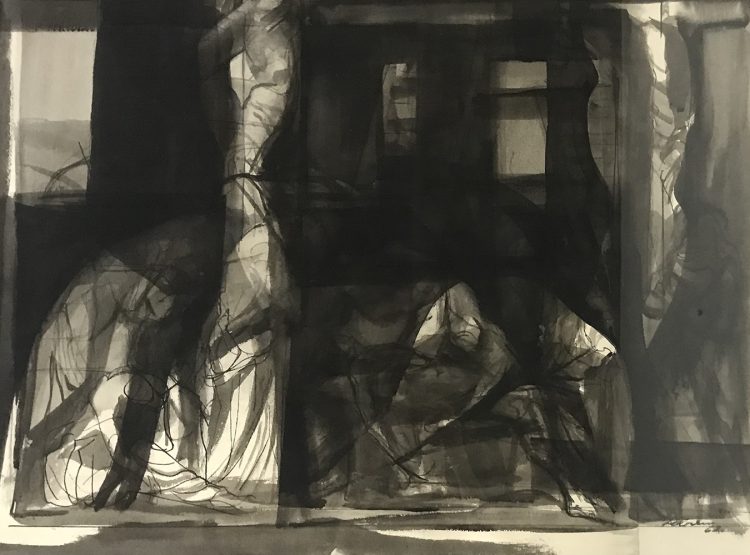
About this Work
About the Artist
Italian, American
b. 1900 Naples, Italy
d. 1964 Malibu, CaliforniaRico Lebrun was born in Naples and studied fresco painting at the Accademia di Belle Arti di Napoli. Through his work as a designer for a stained-glass factory in Naples, Lebrun was offered a contract to work at the Springfield, Illinois branch of the Pittsburgh Plate Glass Company.After his contract ended, he moved to New York City, where he found work as a commercial artist drawing advertisements and fashion plates for such magazines as Vogue, Fortune and The New Yorker. He continued to work and study fresco painting and was soon commissioned for mural work in New York. In the 1940s, Lebrun moved to California and began teaching at Chouinard Art Institute in Los Angeles (now California Institute of the Arts). He also held his first solo exhibition in Santa Barbara during this time. Two of his major projects were the Crucifixion series and Genesis. In the mid‐fifties, Lebrun worked on a concentration camp series, based on Buchenwald and Dachau, which was published by the University of California Press in 1961. In all three of these important projects, Lebrun explored man’s inhumanity to man. His works aroused controversy, but there was no disagreement about their power and vitality.Lebrun’s work is represented in major museums and private collections, including the Metropolitan Museum, the Whitney Museum of American Art, the Museum of Modern Art, and the Fogg Art Museum at Harvard University.
b. 1900 Naples, Italy
d. 1964 Malibu, CaliforniaRico Lebrun was born in Naples and studied fresco painting at the Accademia di Belle Arti di Napoli. Through his work as a designer for a stained-glass factory in Naples, Lebrun was offered a contract to work at the Springfield, Illinois branch of the Pittsburgh Plate Glass Company.After his contract ended, he moved to New York City, where he found work as a commercial artist drawing advertisements and fashion plates for such magazines as Vogue, Fortune and The New Yorker. He continued to work and study fresco painting and was soon commissioned for mural work in New York. In the 1940s, Lebrun moved to California and began teaching at Chouinard Art Institute in Los Angeles (now California Institute of the Arts). He also held his first solo exhibition in Santa Barbara during this time. Two of his major projects were the Crucifixion series and Genesis. In the mid‐fifties, Lebrun worked on a concentration camp series, based on Buchenwald and Dachau, which was published by the University of California Press in 1961. In all three of these important projects, Lebrun explored man’s inhumanity to man. His works aroused controversy, but there was no disagreement about their power and vitality.Lebrun’s work is represented in major museums and private collections, including the Metropolitan Museum, the Whitney Museum of American Art, the Museum of Modern Art, and the Fogg Art Museum at Harvard University.
